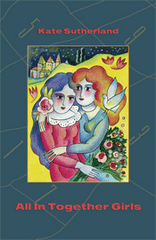In previous books, biographer and literary critic Hermione Lee has analyzed the lives and work of writers such as Elizabeth Bowen, Philip Roth, Willa Cather and Virginia Woolf. In this collection of essays, Lee seeks to illuminate the art of biography rather than the life of a new subject. In the introduction, she writes:
Virginia Woolf’s Nose presents a variety of case studies where the biographer is faced with gaps and absences and unprovable stories. The aim is to ask, by looking in detail at such examples, how a life can be brought home to us. How do biographers deal with moments of physical shock, with the subject’s secret bodily life, with the mystery of death, and with the aftermath of rumour and reputation? How do they nose out the personality and the life of the writer through the often ambiguous and deceptive evidence of their work? What part do blame, resentment, personal affection, idealisation, judgment and defensiveness have to play in the courtroom drama of life-writing? Where do biographers start from, and how do they know when to stop?
Two dominant themes thread through this collection, linking the four essays it contains. The first has to do with the biographer’s subject as an embodied subject. The biographer’s target is always “a living person in a body, not a smoothed-over figure.” But representing a subject’s bodily life poses serious challenges to biographers. The second theme has to do with multiple versions of a single life, and the battles fought between those who have a stake in which version prevails, be they the subject’s family members, friends, lovers, descendants, literary scholars, biographers, or devoted readers.
These two themes come together very viscerally in the first essay, “Shelley’s Heart and Pepys’s Lobsters,” in which Lee discusses instances where bodily relics have played important roles in the formulation of life stories. She makes tantalizing references to the fate of Yeats’s bones, Einstein’s brain, and Napoleon’s penis, before settling on the story of Shelley’s heart as emblematic of “the contested use of sources, of rival versions and myth-making, in which a body part comes to symbolize the subject’s afterlife.” Apparently Shelley’s heart was all that survived the gruesome fate of his body after his drowning death, and his wife and his friends fought over who should get to keep it. Lee writes: “The battle over possession of Shelley’s heart seems to embody the contest over who should ‘own’ Shelley’s story.” And she illustrates the continuation of that battle between biographers who put forth competing versions of the life and of the story of the heart.
The second essay is the one that gives the collection its title, “Virginia Woolf’s Nose.” The nose in question is not Woolf’s own but rather the prosthetic one that Nicole Kidman donned to play Virginia Woolf in the recent film, The Hours. In this essay, Lee considers the layering of Woolf’s life and work with the fictional version of that life and work presented in Michael Cunningham’s novel The Hours, and the subsequent film version based on that novel. Lee does a marvellous job of unravelling these narratives and analyzing the responses of a range of constituencies to the various representations of Woolf. As author of a biography of Woolf and of a critical study of her work, of course Lee herself is a stakeholder here. Her candour about that and about her own responses to the novel and the film enrich rather than detract from her analysis.
The collection is rounded out by an essay on Jane Austen’s rumoured fainting spell upon hearing the news of her family’s impending move to Bath, and, finally, an essay on deathbed scenes in biographies. In the former, Lee illuminates the way that competing versions of Jane Austen’s life have affected interpretation of her work. In the latter, Lee demonstrates how shifting conventions in biography have changed the way deathbed scenes are represented. In both essays, Lee sets a series of different portrayals of the same scene side by side by side. This exercise reveals a great deal about the mechanics of biography.
Near the beginning of Virginia Woolf’s Nose, Lee states: “Biography is a process of making up, or making over.” In these essays, Lee offers a fascinating glimpse into that process of making up and making over.

No comments:
Post a Comment